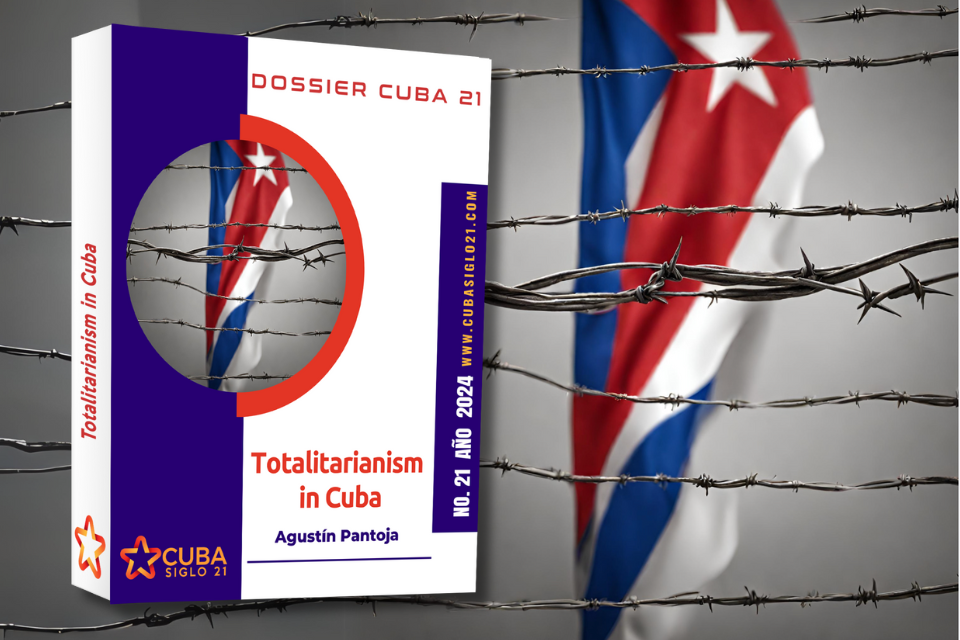Descargar Dossier completo español
Download Complete Report in English
The report analyzes three factors that have characterized the Cuban totalitarian system: the annihilation of private property, corruption, and exodus.
The author considers that the nationalization of property by suppressing the freedom of enterprise and the market is the key element that in the end – in the absence of a foreign patron to finance its shortcomings – has led to the multi-systemic crisis that has pushed more than 80% of the population into extreme poverty.
Statization of the property
A brief account of how the Cuban government in the second half of the 20th century seized the country’s wealth begins in May 1959.
The First Reform Law in Cuba confiscated agricultural extensions and granted property titles to peasants, but 40% of the confiscated land passed into the hands of the State. In 1960, Law 851 expropriated U.S. property, followed by the nationalization of banking companies. Law 890 of October of that year expropriated large companies, while Law 891 affected private banks. In December 1961, Law 989 confiscated the property of Cubans who were absent from the country. The Second Agrarian Reform Law in 1963 nationalized more land, which expanded state land to 70% of the total. The “Revolutionary Offensive” of 1968 liquidated the more than 55,000 small and medium enterprises still in the hands of Cubans. This last measure demonstrated that the real objective of the “nationalizations” was the absolute state control of the economy. In 1975, through a false process of cooperativization, a large part of the land belonging to small farmers was converted into state “cooperatives”. In this way, the state latifundia grew even more to cover 75% of the best arable land in the country. Subsequent decrees attempted to reverse the economic decline without success.
In the fifties of the last century, national production placed Cuba among the first places in standard of living in Latin America. Cuban-owned companies, in addition to sugar, also ran the production of coffee, tobacco and cattle, produced footwear, textiles, paints, fruits, viands, sweets, fish, pork, poultry, milk products and others. Nearly 80% of what was consumed was produced in the country. Today, because of the process described above, Cuba produces only 20% of what it consumes and imports 80%. Or rather imported it in the past because the shortage of foreign currency currently prevents it. In short, the nationalization of the ownership of the means of production and services led the country to ruin.
The results of nationalization can be exemplified with four important traditional production lines in the island: sugar, cattle, coffee and tobacco. In 2022 Cuba produced 460,000 tons of sugar: a figure lower than that achieved in 1861. Once the world’s largest sugar producer, today it imports sugar.
Cattle, the second most important item in the Cuban economy, in 1958 reached a proportion of one head of cattle per inhabitant, a proportion that decreased in 1967 to 0.74 per capita. Today it is calculated at less than 0.32.
The voluntarist plans to turn “Cuba into the Switzerland of America” by creating a new breed of abundant meat and milk producers have been a disaster. To guarantee a glass of milk to children under seven years of age, donations from the World Food Program had to be accepted in silence, a plan that has been maintained for more than 20 years.
Regarding coffee in Cuba, by 1830 Cuba took Haiti’s place as the first coffee exporter in the world. In 1960, 60,000 tons were produced. However, by 2010, the harvest had been reduced to one tenth (6,000 tons), which made it necessary to import the grain to partially cover domestic needs.
On the other hand, tobacco, according to the 2001 TABACUBA Statistics, in the twenty years from the 1980-1981 to the 1999-2000 harvest, decreased from 53 696 to 37 987 tons of leaves. Twenty years later, between 2018 and 2020, just over 30,000 tons were harvested annually. While the 2021-2022 harvest fell below that figure.
While in the first years of the “Socialist Revolution” the process of nationalization of property was carried out, as of 2008, under Raúl Castro’s mandate, the “privatization of power” was consolidated through the Grupo de Administración Empresarial S.A. (GAESA), transforming the totalitarian communist state into a post-communist mafia state. GAESA acquired immense economic power, controlling 70% of the Cuban economy and 95% of the country’s finances. This gigantic monopoly, operating through subordinate companies and the International Financial Bank, exercises practically absolute control over all lucrative economic activities on the island.

Corruption
Another factor of totalitarianism is corruption, which, although it is an evil present in all societies and at all times, was turned into state policy by Cuban totalitarianism to subdue officials and keep them loyal. This strategy turned this scourge into a cancer that invaded the whole society.
Corruption in the history of Cuba is not new. What is new is its presence in all social strata. The wave of expropriations -which began with large foreign properties and did not stop until the smallest properties in the hands of Cubans were eliminated- laid the foundations for corruption to burst into the whole society and all activities.
The report includes a chronology of significant corruption scandals beginning in 1987 with the president of the Civil Aeronautics Institute, Luis Orlando Domínguez Muñiz -who had served as secretary of the Union of Young Communists and was a member of the Central Committee of the Communist Party (PCC).
All efforts to control corruption have been unsuccessful. But the issue of corruption moved to a higher scale when in the first decades of the 21st century the communist regime, as happened in Venezuela, Russia, and other countries around the world, was transformed into a mafia state controlled by an oligarchy. This transition was made in Cuba by divesting itself of the public and social responsibilities of the communist state – full employment, sufficient pensions, health, education, housing, electricity and water services, as well as affordable family basket of basic goods – but without abandoning the totalitarian model of political, economic, cultural and social control. The new class is no longer bureaucratic but entrepreneurial. Their housing, transportation, vacation, and other privileges are no longer associated with their bureaucratic positions, but with properties in corporations and accounts abroad. The privileges of certain military and bureaucrats pale beside those of the new oligarchy.
In this new context, the Comptroller of the Republic is an entelechy with no real power to inspect the economy in the hands of the main embezzler of the national wealth, which is the new oligarchy, whose spawn -such as the military conglomerate GAESA that cannot be audited- operate behind the back not only of the Comptroller’s Office itself, but -what is worse- out of any institutional overseen and against the people’s interests.
The permanence and growth of corruption -after decades of dictating control measures, forming inspectorates, and inspectors corps to inspect the inspectors, of making endless “exemplary” judgments, of calling on the people to fight the people, of blaming U.S. policy for the evils generated by totalitarianism; of making speeches and ideological appeals-, shows that actions on the effects, ignoring their causes, are incapable of eradicating or, at least, reducing the evil.
The solution is based on recognizing the totalitarian state as the main cause of widespread corruption, restoring civil liberties, decentralizing the economy, and allowing the formation of a productive national class.
Exodus
The main cause of the exodus is internal: it began before the administrations of Joe Biden, Donald Trump and Barack Obama; before the “reformist” measures implemented by Raul Castro in 2008, before the 1966 Adjustment Act, and even before the rupture of diplomatic relations in 1961. If its causes are maintained, the exodus will continue because it is impossible to stop it without cutting its root: the totalitarian model, enemy of democracy and root cause of poverty.
The cause of emigration began in 1959 with the stampede of Cubans fleeing the totalitarianism implanted through the death penalty, arbitrary confiscations of property, long prison sentences, the suppression of all freedoms, the dissolution of civil society and the destruction of existing institutions. The prolonged duration of the exodus, its spiraling increase, and the sociological diversity of the emigrants, constitute sufficient reasons to confront its true cause, which is none other than the totalitarian control of the State over things and people that has prevented Cubans from realizing their aspirations within the national borders.
The end of totalitarianism
The collapse of the Cuban totalitarian regime is a fact. The attempt to solve the Cuban crisis through changes of leaders or any other cosmetic change is insufficient. The experience of the last century shows that, in Cuba, due to its history, its culture and its current state, any solution to the current crisis requires structural changes.
What is debatable is, in any case, the way (peaceful or violent) in which it will inevitably move towards another system and whether that society emerging after such change will still be autocratic (although no longer totalitarian) or finally democratic. It is encouraging that the recently emerged social movement for the “5 Freedoms against Totalitarianism” focuses on this regime as the root of all evils and proposes a path of basic freedoms to ensure that the change that will come about will be towards a democratic society, with rule of law and market economy.








